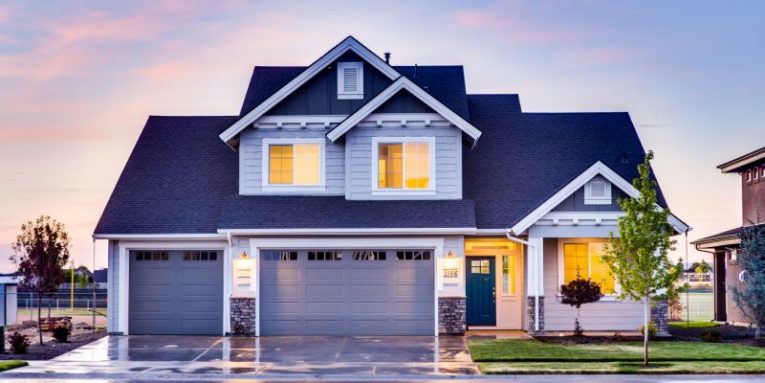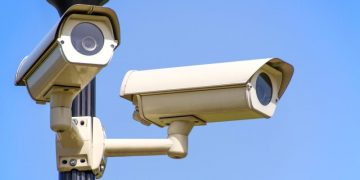Top 10 Tips To Help Enhance Your Smart Home Security

If you are trying to figure out how to manage your smart home security, you are already on the right track because all you need is some theoretical knowledge that you could apply practically. We are here to supply you with that knowledge, so that you yourself could take the reins of your home security into your own hands. In this post, you will find 10 security steps that will help you take care of your smart home security and ensure that everyone inside is safe at all times.
1. Install reliable hardware and software
SmartHomeUSA has defined the term Smart Home perfectly. According to Smart Home USA, a Smart Home is: "a residence that has appliances, lighting, heating, air conditioning, TVs, computers, entertainment audio & video systems, security, and camera systems that are capable of communicating with one another and can be controlled remotely by a time schedule, from any room in the home, as well as remotely from any location in the world by phone or internet. That means that your smart home is supported by the hardware and software you install. As you should know already, not all hardware and software is equally as useful or reliable, and it is your responsibility to employ the best, most reliable, state-of-the-art options. If you cannot invest in the most modern things, focus on reliability. Pay close attention to reviews and EULA, Privacy Policy, Terms of Use, License Agreement, and other legal statements before installing anything."
2. Update software frequently
You must not forget to install updates. Outdated software is automatically more susceptible to serious security issues, and you want to avoid those at all cost. Let's take your antimalware and antivirus software as an example. If it is outdated – i.e., the latest security updates are not installed, and security vulnerabilities are exposed – you run the risk of exposing yourself and your home to vicious cyber attackers. They can use even the most inconspicuous security backdoors to slither in and take over. Just a decade ago, the software we used was limited to our computers, laptops, and mobile devices. Now, we use software to control our heating, washing machines, baby monitors, voice assistants, entertainment devices, security cameras, and so on. If a single piece of software in your home is outdated, you simply cannot guarantee comprehensive smart home security. To rectify this, stay on top of all updates.
3. Set up a firewall
Given that you probably have quite a few computers and smart devices inside your home, you need to think about setting up a firewall. It can significantly enhance the overall security of devices, and so that is one of the most important things to look into when thinking about how to secure a smart home. A reliable firewall controls the network traffic, provides you with reports, and acts as a defense mechanism. Whenever you browse the web, purchase goods online, communicate with your friends via social networking accounts, or do anything else, information packets are sent and received, and it's the job of a firewall to filter them and, potentially, block packets that do not meet the standards, i.e., are used by cybercriminals. If you care about your virtual security, you should really consider setting up a firewall.
4. Consider installing UTM
While you might install antivirus or antimalware software and firewall separately, you also have the option of installing UTM (Unified Threat Management) appliances. A UTM appliance offers several different security functions at the same time, and so it can be extremely useful when taking care of your smart home security. UTM appliances usually offer the user antivirus, firewall, anti-spam, VPN, URL filtering, and other services that can increase the overall security. The main downfall of such appliances is that they are not cheap. eSecurity Planet has created a list of top 10 unified threat management systems, and if you check the list, you will also find the pricing. Ultimately, that is not a necessity, and you can certainly manage your smart home security without expensive UTM applications.
5. Secure your home camera
It is important to think about steps 1-2 when securing a home camera. Unfortunately, home cameras are hacked all the time because it is fairly easy to do. You can learn more about this in this blog post. As long as you install legitimate software that offers encryption and you install necessary updates to support your security camera software, you should be fine. It is important to focus on home cameras when discussing smart home security because if hackers gain access to those, you and the people living in your home could be at higher risk. It is one thing to have your accounts hacked, and it is an entirely different thing to have spies tracking you physically. In the worst case scenario, they could orchestrate robberies, blackmailing, or even kidnapping using the video they obtain.
6. Protect your wireless network
It is essential that you protect your wireless network appropriately. If you are still using WEP to protect your wireless network, you should really switch to using WPA2 and WPA3. The job of WiFi Protected Access is to ensure that the information shared between your device and the router is encrypted and, therefore, secured. Once you set up a wireless network, there are a few things you want to do. Ultimately, it is most important that you hide your network and set a strong password. We also suggest disabling the guest network access. Be mindful about who connects to your wireless network at all times.
7. Secure your wireless router
When discussing wireless network protection, we cannot ignore the security of the wireless router. First and foremost, make sure to change the name and password. Most routers come with generic names and passwords that are weak and, therefore, can be cracked easily by anyone who knows what they're doing. It is also a good idea to create two WiFi networks on the same router to distribute the load, for example, between computers, tablets, and phones and your smart home devices that you do not use to handle online banking operations or sensitive data. Also, do not forget that your router might need updates too!
8. Create a backup
You might create a backup purely for your own convenience, but, in fact, you must backup data to keep it safe in case of an emergency. According to CSO, 32,000 smart homes are at risk of being hacked due to MQTT misconfigurations, and we are sure that there are plenty of other issues that could lead to the same outcome. In some cases, your smart home security could be out of your hands, and you want to be ready. As the saying goes, you must prepare for the worst, and hope for the best. In case your smart home is hacked, you want to be able to get the systems back up and running in no time. It might be most important for you to backup your passwords because you do not want to forget them. Also, if they are backed up, it should be easier for you to change them quickly in case a security breach is detected.
9. Change passwords mindfully
We have already talked about changing the default password of your router. Needless to say, you should change all default passwords that come with your smart home devices. Whether it is your wireless router or your voice assistant, you want it to be protected with a strong password. Speaking of strong passwords, you must evaluate your current passwords to determine if they are powerful enough to keep attackers away. Passwords like qwerty123 or 1qaz2wsx are among the worst ones anyone could ever use, but, surprisingly, people still do it. If any of your passwords are easy to guess or contain personal information (e.g., addresses, names, memorable dates, or phone numbers), you want to change them immediately. When you change your passwords, make sure they are as long as possible (if the length is not limited, go for at least 14 characters), and contain upper and lower case letters, numbers, and random characters. If you are worried about remembering such passwords, there's one more thing to do.
10. Employ a trusted password manager
Setting up strong passwords is a must if you want to control your smart home security appropriately. Of course, the stronger a password is, the more complicated it is to remember it. You want to save the passwords somewhere, but you must not make mistakes. First of all, DO NOT write your passwords down on random pieces of paper (remember when we discussed spies behind your security cameras?). Second, DO NOT store your passwords in random files on your computer or other smart devices. If they are hacked, all of your passwords could be stolen before you realize what is going on. So, how can you keep your passwords safe? We suggest employing a password manager. If you're trying to save money for other smart home security tools, you will be glad to learn that you do not need to compromise. Cyclonis Password Manager is free, and you can use it to create and protect all of your passwords. They are encrypted and stored in a vault, and so you do not need to worry about having them hacked.
Hopefully, you don't need to wonder how to secure your smart home anymore because you have the knowledge that will help you manage your smart home security in the best way possible. Of course, if you wish to continue the discussion, you can do so using the comments section below.








